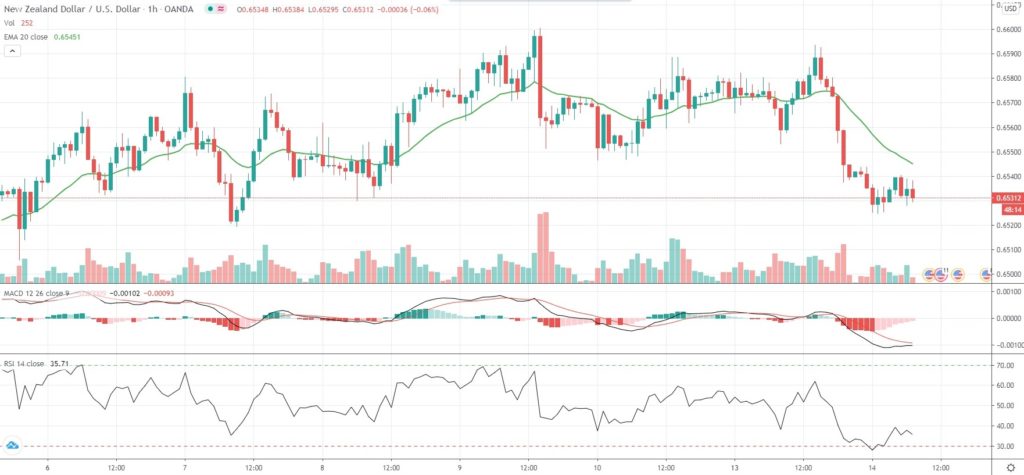NZD/USD extended losses from the prior trading day on Tuesday, as frictions between the United States and China on several fronts as well as surging new COVID-19 cases dampened demand for risk-sensitive currencies such as the kiwi dollar.
Diplomatic relations between Beijing and Washington have worsened. The United States is moving closer to end Hong Kong’s special legal status after China’s new security legislation for the former British colony, while a “Phase Two” trade deal between the two economic superpowers seems to be seriously in doubt.
Additionally, reports emerged that the Trump administration intended to soon end an agreement between China and US auditing authorities from 2013, a move that could portend a broader crackdown on Chinese companies listed on US stock exchanges that are under fire for eschewing disclosure rules.
Meanwhile, deepening coronavirus crisis in the US, Brazil, India and elsewhere continues to be a source of concerns. California Governor Gavin Newsom announced new restrictions on businesses on Monday amid surging new coronavirus infections and hospitalizations across the US’ most populous state. Bars were closed, while restaurants, movie theaters, zoos and museums were ordered to discontinue indoor operations.
“The focus has shifted to whether or not the next round of coronavirus lockdowns will be large enough to damage economic growth,” Junichi Ishikawa, senior foreign exchange strategist at IG Securities, said.
“The Hong Kong problem could potentially lead to new trade friction. Negative developments on either front could cause stocks to adjust lower, and drive some safe-haven flows to the dollar and the yen.”
Any trade flow disruption prospects tend to weigh on the kiwi dollar, as China is New Zealand’s largest trading partner.
As of 7:05 GMT on Tuesday NZD/USD was edging down 0.10% to trade at 0.6533, after earlier touching an intraday low of 0.6525, or a level not seen since July 7th (0.6520). NZD/USD has retreated 0.55% so far this week, following three successive weeks of gains.
On today’s macroeconomic front, at 12:30 GMT the Bureau of Labor Statistics is to report on US consumer prices. The annualized consumer inflation in the country probably accelerated to 0.6% in June, according to market expectations, from 0.1% in May. The latter has been the lowest annual inflation since September 2015, as gasoline prices plummeted 33.8% year-on-year.
The annualized core consumer inflation, which is stripped of prices of food and energy, is expected to slow down to 1.1% in June from 1.2% in May. The latter has been the lowest core inflation since March 2011.
At 18:00 GMT Federal Reserve Board Member Lael Brainard is scheduled to speak at a National Association for Business Economics webinar with a topic “Perspectives on the Pandemic”, while at 18:30 GMT Fed President for St. Louis James Bullard is expected to speak on the US economy and monetary policy during a live-streamed event at the Economic Club of New York.
Bond Yield Spread
The spread between 1-year New Zealand and 1-year US bond yields, which reflects the flow of funds in a short term, equaled 9.2 basis points (0.092%) as of 6:15 GMT on Tuesday, or unchanged compared to July 13th.
Daily Pivot Levels (traditional method of calculation)
Central Pivot – 0.6557
R1 – 0.6576
R2 – 0.6613
R3 – 0.6632
R4 – 0.6652
S1 – 0.6520
S2 – 0.6501
S3 – 0.6464
S4 – 0.6428






